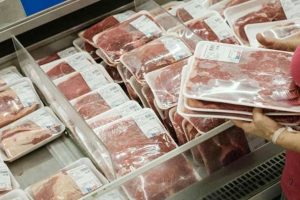The other casualty of Trump

After about a week of debating how US President Donald Trump violated trade rules and economic common sense, and this is now becoming more apparent, the world now realizes, as Trump must have designed it, we all might have to either grin and bear it or fight it off. It’s humanly impossible to drill sense into the man.
JP Morgan CEO Jamie Dimon could not have been clearer about his warning that Trump’s tariff policy is likely to raise prices, drive the global economy into a possible recession, and weaken America’s standing in the world. As he stressed over CNN early this week, America’s “extraordinary standing” was precisely anchored on its strong economy, military, and morals. These three foundational truths are increasingly being eroded at the White House, begging for a reprieve.
But Trump would not have any of that because he wanted to exact a pound — perhaps a ton — of flesh from the world for making America not so great anymore.
He is now engineering to “Make America Great Again” by high tariff walls which would make US imports more expensive for the American people. Nobody thought that to make America great again is to make the American people pay more for their groceries, electronic gadgets, and even cars. If the US Fed is to be true to its job of keeping price stability, monetary easing might have to take a back seat, and it might instead consider a possible reversal. Thus, the American people might be facing higher interest rates for auto and housing loans, and with the stock market crash, their wealth dissipated. The US is impoverishing, rather than empowering, its own people. We can see more people shortly queuing up in the social security offices across the United States.
He is also planning to use a 1996 law to fine and seize migrant workers if they refuse to “self deport and leave the country.” If migrants fail to pay the fine of $998 a day, their properties could be seized. Implementing this sweeping immigration crackdown is bound to affect some 1.4 million migrants who have in their own small way helped mitigate the US’ tight labor market by offering cheap labor and special talents in technology and the arts. There has been a climb in mixed marriages making the US truly a melting pot of color, religion, race, and social standing that has made it more dynamic and, yes, more democratic. Is the US really serious in shooting itself in the foot?
Nobody can ever question that Trump’s tariff and immigration policies will hurt the poor more. It’s funny but painfully sad that the New York Times’s Paul Krugman should write that Trump’s blue-collar base is feeling “brutally scammed.” Many of them thought that “America First” would bring back jobs to the land of the free through reshoring, restructuring the domestic economy, and allowing massive use of technology to boost productivity and redistribute the labor force into new frontiers.
Instead, it’s fast becoming a live show where the US will be all alone.
Trump looks and sounds dead serious in pursuing this policy shift, but as many are now convinced, the point of the two-time US head of state is not really to enforce the law, but rather to project and instill fear in the global community.
Our own proposition is that Trump realizes, and I hope we are right, that America’s trade deficit of more than $1 trillion, the one singular basis of his so-called reciprocal tariffs, is not caused by the rest of the world, whom he claimed, has looted, raped, pillaged, and plundered the United States. The country’s current account shortfall is invariably symptomatic of the US’ excessive spending beyond its means. It’s no different from someone who finances his frivolous lifestyle by using his credit card more and more until he is hopelessly buried in debt.
But Trump has to have a whipping boy.
Allies and non-allies will be subjected to at least 10% universal tariffs. On top of that, the US is also imposing variable tariffs due to what it refers to as “tariffs charged against the US” due to so-called currency manipulation and trade barriers. Nobody knows how the calculus was developed. Yet, as Jeffrey Sachs wrote last week, “Trump’s tariffs will not close the trade deficit…” Instead, we reiterate that such tariffs will make Americans poor and harm the rest of the world.
But Trump and his advisers must be looking for a way to fund the third pillar of his announced three-pronged policy: massive tax cuts for the rich and powerful in American society. Cutting taxes for the social elite means the federal government would have to take stock of alternative solutions to the ever-increasing fiscal deficit and subsequently federal debt. The US’ wars in the Middle East and Eastern Europe are also draining the federal budget of funding.
But who does not know, as The Guardian reported the other day, that Trump 1.0 enabled 11 of the biggest US consumer goods corporations “to spend more than three times as much on share buybacks as they did on taxes,” using their savings from the 2017 Trump tax cuts to “supercharge purchases that enriched investors instead of lowering prices on goods essential to daily life.” This was based on the recent report prepared by Groundwork Collaborative, an economic think tank.
In the spirit of the Lenten season next week, Trump will be penalizing the consumers to resurrect the same tax cuts — now amounting to some $5 trillion in corporate tax cuts that could lead again to more buybacks. We don’t know how those tariff increases will offset the expected decline in domestic demand and sustain fiscal sustainability. But we are very certain that PepsiCo, ComCast, United Healthcare, Kimberley Clark, and other corporations’ $500 billion in profits following the first tax cuts were an enormous opportunity loss for the federal government. While they paid some $140 billion in taxes, that was just peanuts to their profit gains.
We don’t need AI to realize that buybacks are a company’s purchase of its outstanding shares in the equities market. With such buybacks, the number of shares available to the public is reduced and bolsters stock value and, yes, investors’ wealth. One estimate, as cited by The Guardian, puts publicly traded companies spending as much as 90% of their earnings on buybacks which could have been instead funneled back into the company to keep prices down and increase workers’ wages.
As Groundwork argued “this is how you get the staggering wealth inequality in this country.”
Trump 1.0 has transitioned to Trump 2.0 and with such a transition, the spirit of the 2017 Tax Cuts and Jobs Act (that dropped the corporate tax from 35% to 21%) is very much alive. Trump 2.0 is about to reduce the corporate tax further to 17% and most of company windfall, estimated at some $50 billion annually, will likely end up buying back company shares instead of promoting stronger purchasing power of consumers.
To rub it in, some Republicans are now thinking of slashing Medicaid and other social service programs which benefit the marginalized and the poor to fund — you guessed it right — the massive tax cuts. It’s no different from our recent experience with the Philippine Congress that defunded PhilHealth and other critical social service projects to finance non-critical but profitable infrastructure like road widening and river dredging projects, the congressional budget in the forthcoming mid-term election, and the President’s intelligence and confidential funds.
Trump’s downsizing of the federal bureaucracy is also ill-advised. It’s fiscal profligacy that is the real root of the problem, not the salaries of civil servants or the bigger budget for research and development (R&D). Civil servants deliver public services. R&D sustains America’s competitiveness in technology. As Sachs claimed, the US needs to rethink the existence of some 750 overseas military bases, the bloated CIA and other intelligence budgets, and, of course, massive payments on America’s soaring debt.
Trump 2.0, in no uncertain terms, is therefore showing us that the other casualty in Trump’s trade war is the battle against poverty and inequality in the US and the American people are clearly losing ground. It is those with corporate control that stand to benefit from this series of missteps and absurdities. Unfortunately, the global community is right in the line of fire.
To support this proposition, and as we prepared this column Thursday morning, we received news that once again, Trump flip-flopped and reversed his reciprocal tariff regime by hitting the pause button for three months. It is obvious that the bloodbath in the US government bond markets — usually a safe haven for investors and corporates — must have somewhat convinced Trump to go slow. Not that his heart had changed like that of Paul on the road to Damascus, but his wealthy advisers must have realized that the outcome could be more catastrophic. Recent sell offs of US bonds mean less opportunity to fund the federal deficit and US wars everywhere.
We caution the Philippines not to allow itself to be entertained by the prospect drawn by some analysts saying the impact of the tariffs on the Philippines is manageable and perhaps the least in the region. We have such things as second-order effects which could be worse than their first-order sibling.
Diwa C. Guinigundo is the former deputy governor for the Monetary and Economics Sector, the Bangko Sentral ng Pilipinas (BSP). He served the BSP for 41 years. In 2001-2003, he was alternate executive director at the International Monetary Fund in Washington, DC. He is the senior pastor of the Fullness of Christ International Ministries in Mandaluyong.




